Bedak sejuk, a trusted beauty secret of our grandmothers

At dusk, when women with white sceptre-like masks ventured out of their homes to purchase a snack or visit neighbours, children would gawk while adults would shrug their shoulders in indifference.
Far from being walking ghosts, this resembled a traditional beautification ritual for the women (and children), applying a white paste on their faces to tighten and moisturise the skin, draw out tiny impurities, etc.
Bedak sejuk ("cold powder" in Malay) must have had its origins in rural Malay, Chinese Peranakan or Chinese households. It is famed for its cooling effect, hence its name.
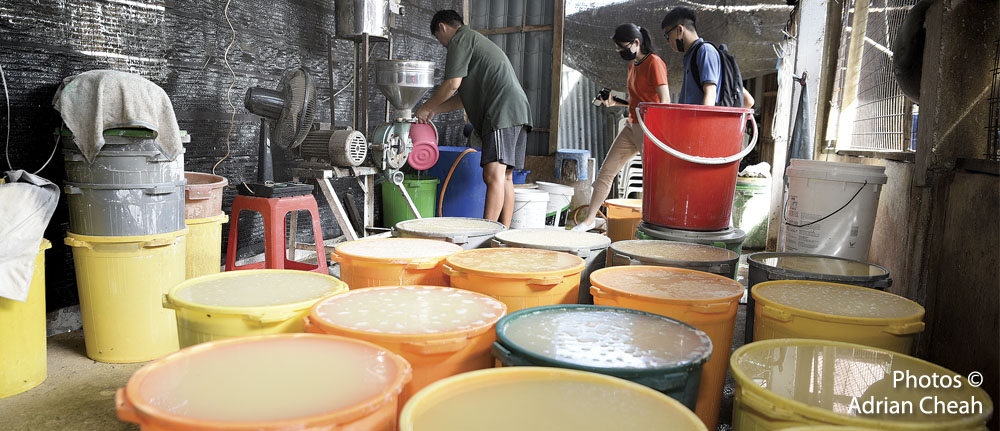
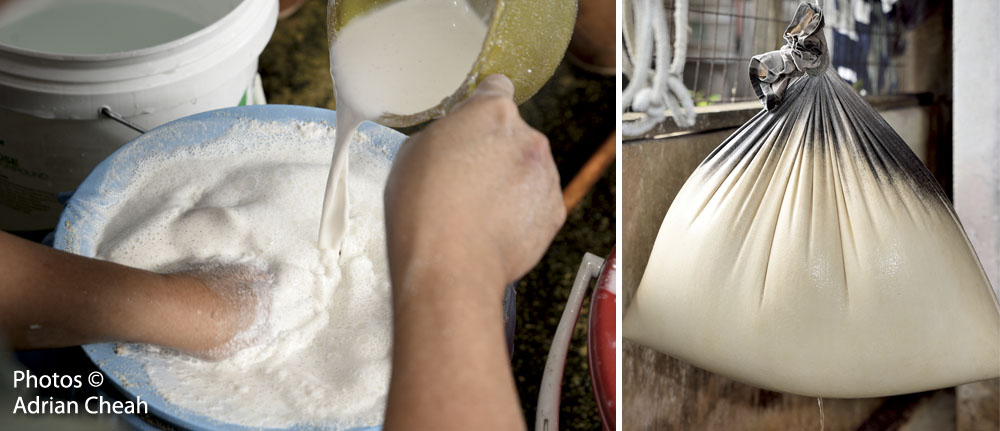
Rice, the food staple, goes through a slow fermentation process which takes a month before it is ground into a paste, sieved through a fine cloth and hung in a filtration bag to remove excess water.
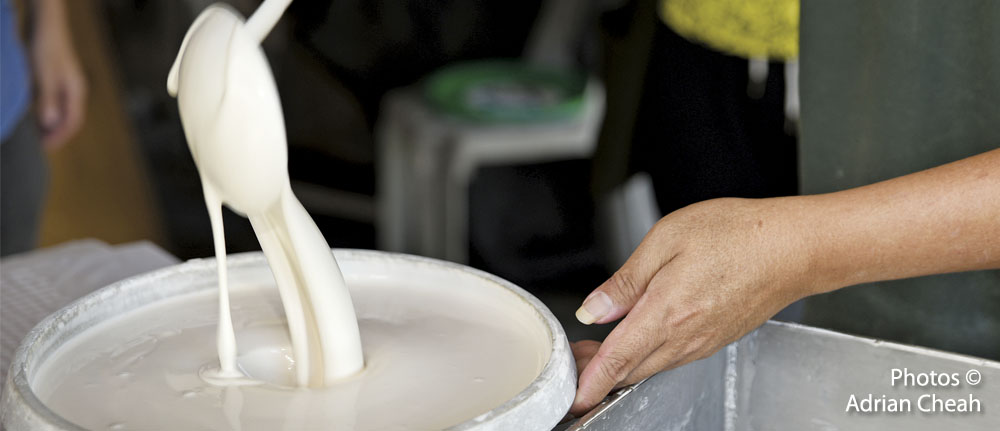
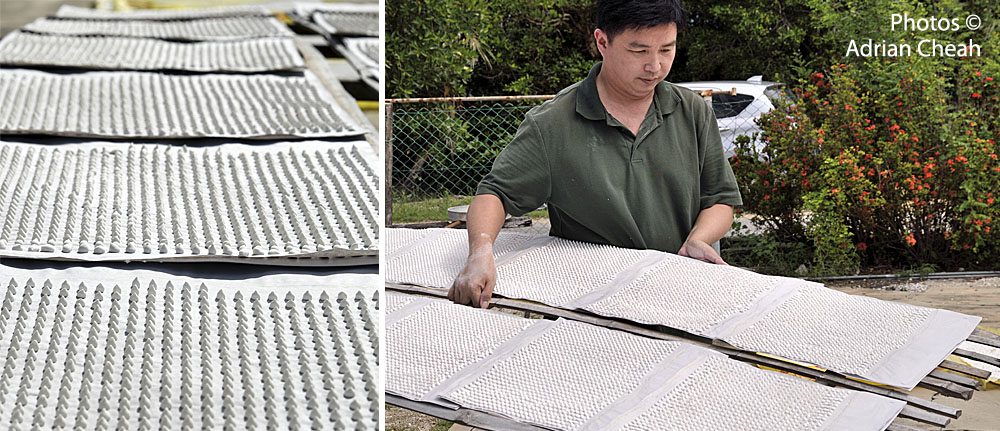
A consistent “batter/paste” (with added water) is then prepared and pushed through a sieve with tiny holes. The pearly teardrop nuggets are then sun-dried thoroughly, otherwise they will get mouldy. (When homemade, these nuggets are irregular bits and pieces.)
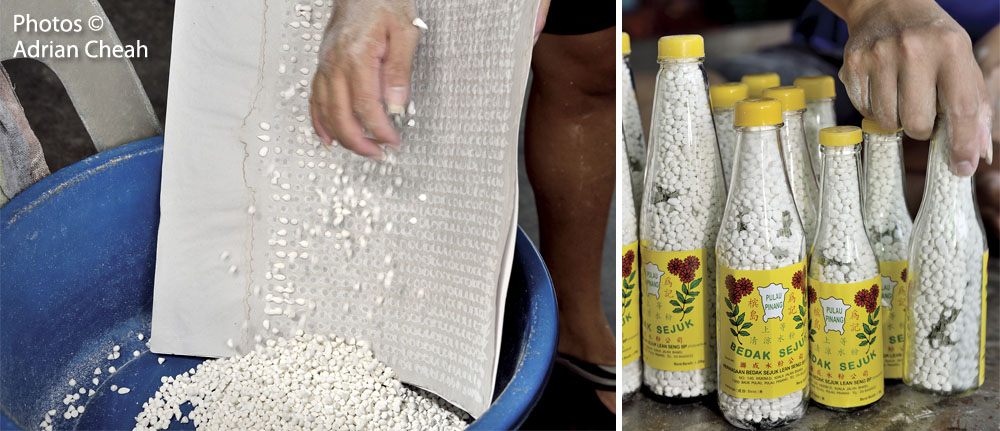
A few dried daun pandan (screwpine) shreds are then added during bottling to render a whiff of subtle perfume. Or you could also add dried jasmine buds for an alternative fragrance.
Mr. Yeoh Kean Beng plied this traditional trade for over 40 years. His son Siong Huat has taken over his business since 2016, earning a simple living from his legacy. His brothers, working elsewhere, lend a hand when necessary. Visitors, especially school children, benefit from an interesting insight into how bedak sejuk is made and how it has stood the test of time.
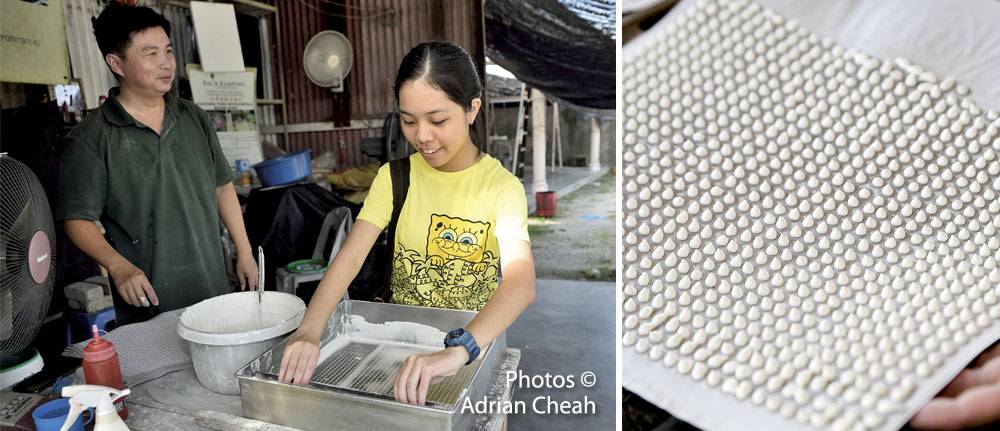
Siong Huat is always at hand to walk one through the bedak sejuk making process. He provides visitors a first-hand experience of making bedak sejuk. In the above photograph, he taught my daughter how to produce over 900 bedak sejuk teardrops with just one swipe. In the good old days, his father would laboriously pipe out every drop individually, albeit with lightning speed.
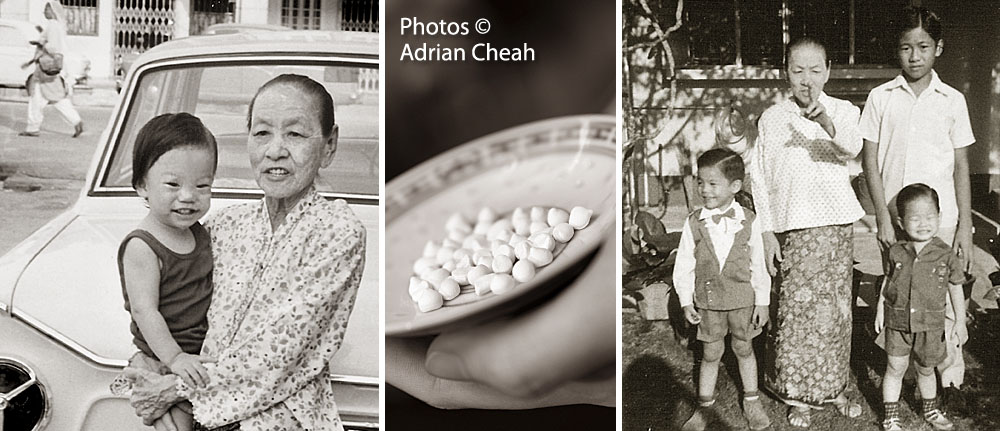
Although we now consider bedak sejuk a traditional trade, it was very common back in the good old days. I can still vividly remember my late maternal grandmother making her own bedak sejuk and how Mum would plaster my face with Granny's creation, often after bath. In the 1950s, Mum employed a "black and white amah" (a live-in domestic helper, dressed in a white blouse and black trousers) named Ah Kooi. She made very good bedak sejuk for the family. According to Mum, there were very specific days Ah Kooi would select to make the bedak sejuk, I suspect out of superstition. She would have be an ideal person to interview for this story as her methods and perspective would have be very different. Sadly, such golden tales are buried in the sands of time, gone forever with her. We will never know if she had acquired the skill in China or picked it up when she came over to Malaysia to eke out a living. She was a part of my family for more than a decade and spent her last days in Penang. Ah Hoe and Ah Cheng were two other "black and white amahs" who helped out with the daily chores at the Cheah household. I have very little recollection of them and must have been very young then.
According to my eldest sister, Elizabeth, her late mother-in-law Selasiah Sidek, (I fondly called her Mak Lang) also made her own bedak sejuk. She would even "jampi" (make a strong wish or cast a spell) over the bedak sejuk when making a batch. The "magical" whispers must have been a beauty spell to enhance the potency of this natural remedy. Ancient Asian cultures are indeed fascinating. The rituals and methods of even making something as ordinary as bedak sejuk have such varied details.
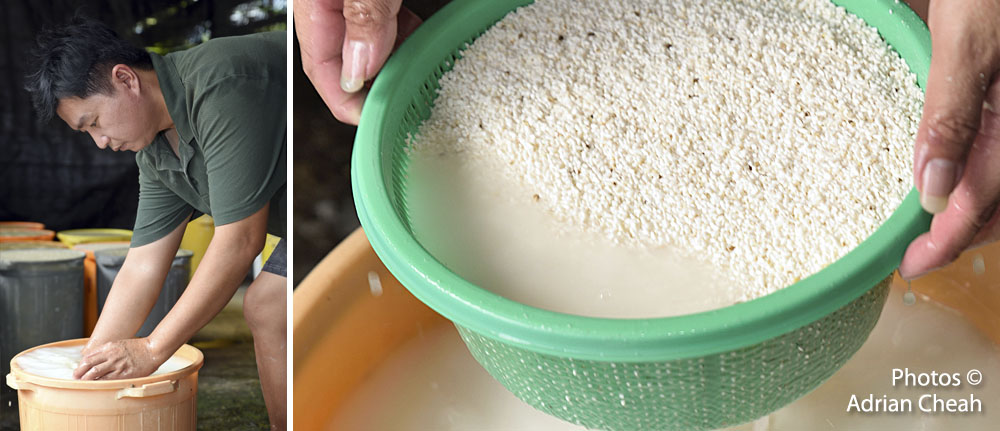
With every household making their own batch then, it was challenging for Siong Huat's father to solely depend on the income from bedak sejuk to support the family. To make ends meet, he reared pigs and produced belacan for sale to provide a steady source of income. It was only when households reduced their homemade bedak sejuk (probably out of convenience) that the Yeoh family reinforced their trade.
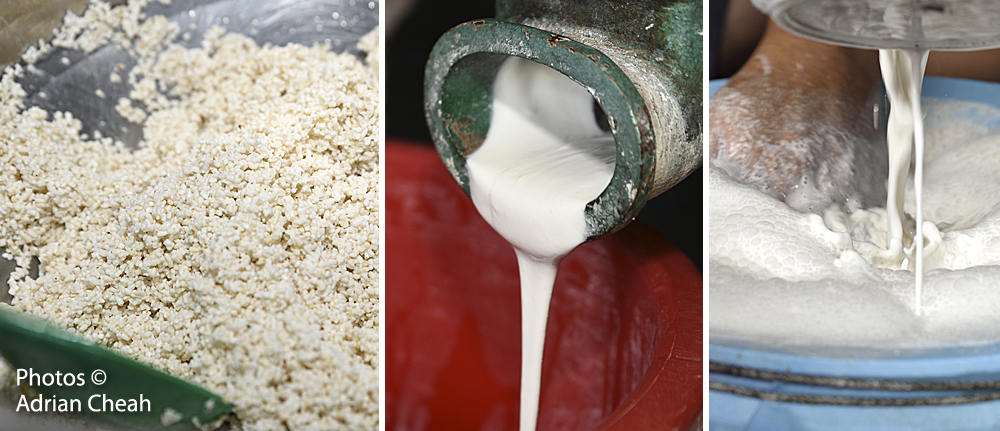
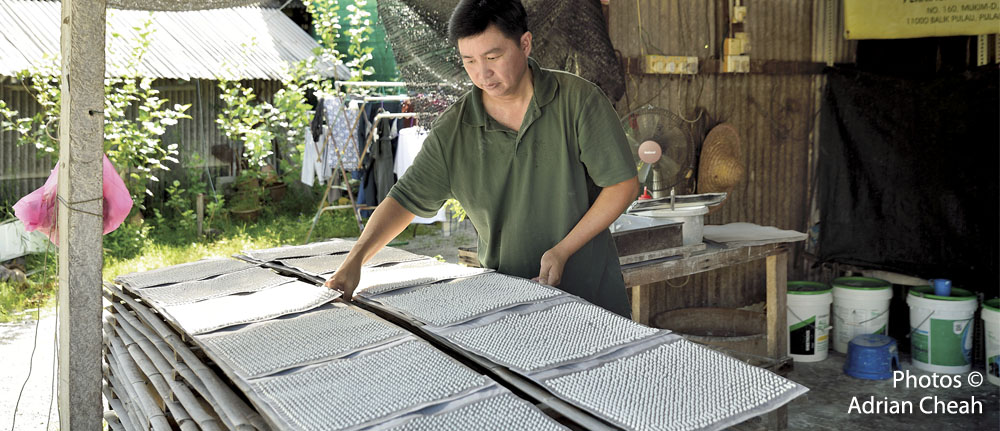
Today, Siong Huat has even ventured into the export market covering countries such as Singapore, Taiwan, Hong Kong and the US. Locally, his customers are mostly old-timers who swear by its benefits, as well as those who seek out natural, chemical-free beauty products. Making bedak sejuk the traditional way is a dying trade and Siong Huat and his brothers are proud to keep this tradition alive in Penang.
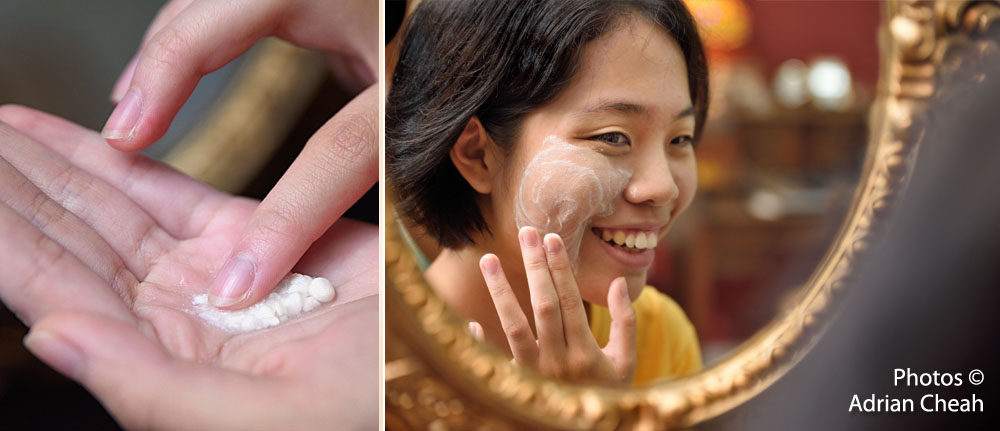
In 2020, when I was interviewing Siong Huat for a book I was working on – "Never Forgetting Balik Pulau", my teenage daughter tagged along. She was intrigued by the simplicity of the ingredients – only rice and water – allowing time to work its magic. Being a teenager, she was happy to discover that applying bedak sejuk overnight has helped to alleviate her acne breakouts.
Asian cultures in countries such as Japan and Korea have also long used rice as a main source of ingredients in many of their traditional beauty regimes. For generations the Koreans have been using rice-infused water to wash their faces. They believe it brightens and nourishes the skin. In Japan, Geishas use yu-su-ru (boiled-down rice water) to wash their faces; helping to keep their skin smooth and fair.
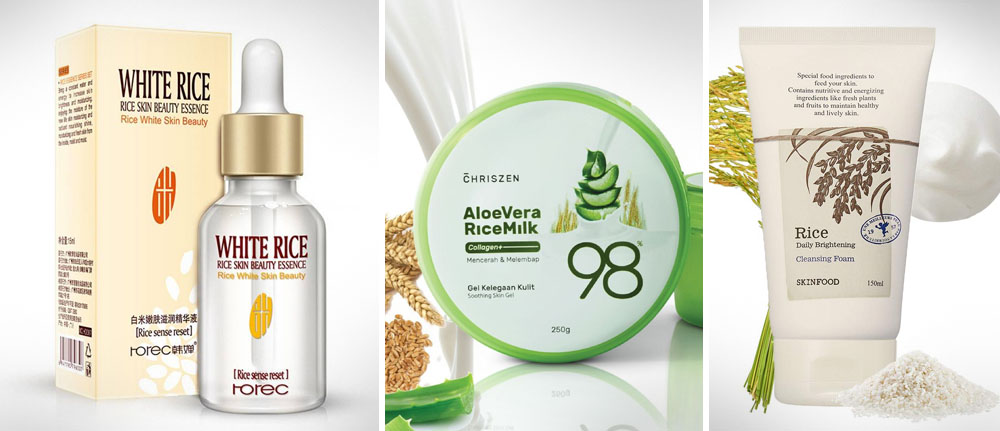
Today, it is interesting to see that the modern world is incorporating rice extracts in skincare and haircare products including beauty brands such as Rorec, Chriszen, The Face Shop and Skinfood. Although the active ingredient is not new, it does appeal to consumers who are turning to more natural ingredients. Before you reach for a bottle of these beauty products, try bedak sejuk, something our grandmothers have trusted for generations. The only thing is that when applied, you might startle your neighbours especially in the evenings.
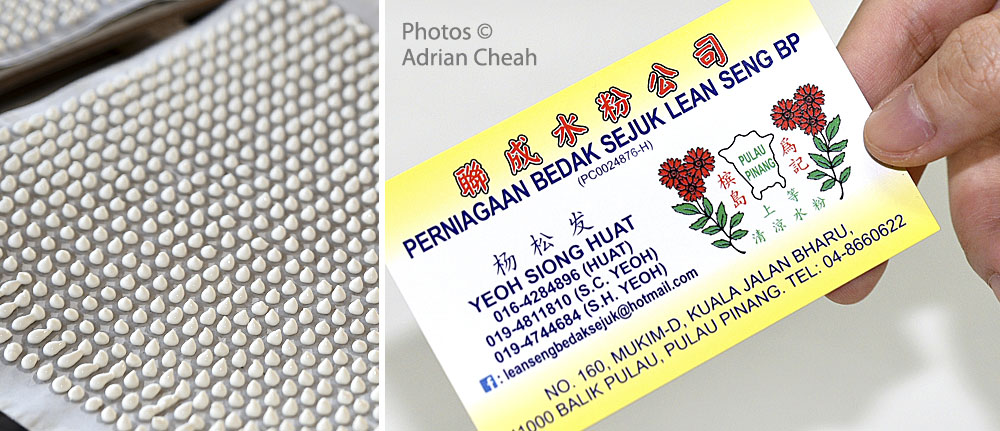
Siong Huat's bedak sejuk trade operates from his humble family home in Kuala Jalan Bharu in Balik Pulau.
Perniagaan Bedak Sejuk Lean Seng
160 Mukim D, Balik Pulau, Penang.
T: +604 866 0622
---------------------------------------------------------
Written by and photographed by Adrian Cheah
© All rights reserved
Edited by Josephine Choo
Updated 16 November 2021